New Delhi: In a large hall that was converted into a post office a few years ago, around 15 people sit on plastic chairs behind glass counters. Behind them sits fifty-one-year-old Rajesh Jhakad, occupying the boss’ chair, which is draped in a towel. His desk is covered with a glass sheet, underneath it lies various scheme papers stating target numbers that serve as a ready reckoner for him. As the postmaster of Najafgarh post office in Delhi, Jhakad has to continually remind everyone of their targets.
“Daak Ghar Bachat Yojana,” “Home Loan Ki Home Delivery,” and “National Saving Schemes”, read some of the bold titles on those papers.
“I’ve pasted them all here so I don’t have to look for everything on the computer. It’s easier to just glance at the table. These are the things I have to see 30 to 40 times a day,” said Jhakad, dressed in a formal shirt and trousers.
Targets and scheme promotions weren’t characteristic of India’s post offices just about two decades ago. The postal department carried the humble image of carriers of letters and money orders. Except Speed Post, everything was slow. But all that has changed dramatically. There is newfound pressure to open accounts, meet revenue goals, and attend frequent review meetings. With the launch of India Post Payments Bank in 2018, the burden of financial inclusion has come on shoulders of India Post employees who are facing large work volumes. The postman is competing with cheaply hired young private delivery executives who run on incentives. The post office employees today, sell flags, Gangajal, prasad and spend hours before customers, convincing them to open accounts.
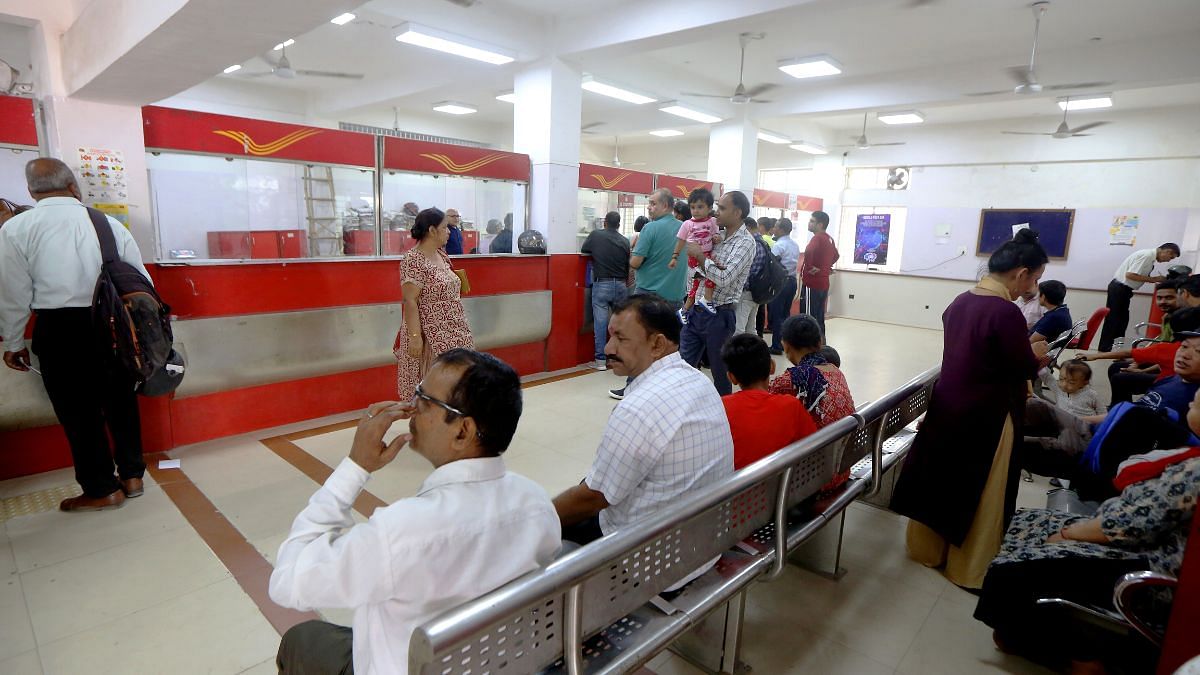
Also read: Govt jobs are changing. PSU bank staff live in pressure cooker, 9-5 replaced by 24×7
No more a ‘sarkari damaad’
Rajesh Jhakad has to open 4,800 savings accounts at his branch in October alone. To meet this goal, the post office is organising Daak Chaupals in nearby health centers, schools, and even in villages. These events aim to raise awareness about the benefits of the financial schemes being offered by India Post.
“I had never seen a post office going out into the field before, but now we face competition from the delivery companies, banks and even insurance companies. To meet targets, we must step outside the office,” said Jhakad.
The idea to set up such camps was pushed down by senior officers of India Post during one of the monthly review meetings.
The four lakh employees are no more “sarkari damaad”, said SK Sinha, a retired secretary of India Post. After working with India Post for years, the target culture is making employees struggle: stretching their work hours and leaving them stressed.
The postal department has seen several transitions since the 1980s—when former prime minister Rajiv Gandhi first introduced computers in India. The IT interventions in the following decades were supposed to reduce the workload and make systems faster. However, with the advent of ecommerce, a new phase of churning is set in the department’s workforce that is now competing with companies such as Delhivery, EKart, Bluedart, etc.
I had never seen a post office going out into the field before, but now we face competition from the delivery companies, banks and even insurance companies. To meet targets, we must step outside the office
— Rajesh Jhakad, Postmaster, Najafgarh post office
“I used to ask everyone in the family and in my neighborhood to open a savings account in our post office so my target could be met. Most of the time they didn’t and I got scolded for that. But one can only try,” said Sudhir Rathi, a clerk at a post office in Delhi. His primary job is to handle customer transactions for savings accounts and customer inquiry on front desk.
The India Post employees have had to promote the digital banking services as well by educating the customers to ensure efficient delivery of services.
“You see our country’s literacy rate and the government wants us to educate them about digital platforms. This is really difficult. In urban areas, it’s easy but our colleagues in rural areas struggle a lot with this task,” said Ankit Saini, a chhatai sahayak (sorting assistant) at one of the post offices in Delhi.
India Post launched the IT modernisation project around 2016. It brought new systems such as Core Banking Solutions (CBS), Enterprise Resource Planning (ERP), and Rural Information and Communication Technology (ICT). Employees had to adapt to all these new systems. They had to start managing the digital financial services as the post offices were fully computerised and equipped with handheld devices and micro ATMs. Additionally, the national mail carrier had to provide doorstep banking services even in remote areas.
“Digitalisation is not the issue. The issue is the kind of work it brings with itself. When ecommerce companies did not continue their business with us, we had this pressure to sign up bulk mailers to bring profits to the department. Businesses that need mailing services. That is the case with the targets of opening saving accounts and insurance products,” said Saini.
The mounting losses for India Post have made things worse over the years. In 2023-2024, the revenue stood at Rs 11,321.22 crore, while expenditure was Rs 35,680.91 crore. Higher losses mean the government is looking for newer ways to use postal department resources.
After the sixth pay commission came into force in 2006, the salary of government employees increased, impacting government spending on India Post. A decade later, in 2016, after the digitalisation and ecommerce boom, India Post staff had to be trained to provide digital services and manage the business coming from the ecommerce companies.
“Earlier, they used to eat poori sabji and now they are getting roti sabzi. The pressure has increased for sure but one has to justify the salary that the government is giving. You can’t be sitting in the office being sarkari damaad during your entire service,” said SK Sinha, who retired as secretary from the Department of Post in 2016.
Increasing bank density over the years has meant more preference to them over post offices. This has increased the struggle for India Post employees in convincing people to open their accounts with them.
But there is a huge difference between input cost of private operators who function with a slim staff strength and the department.
“With so many employees and government facilities, the India Post can’t compete with private players and hence they are at a loss,” said Sinha.
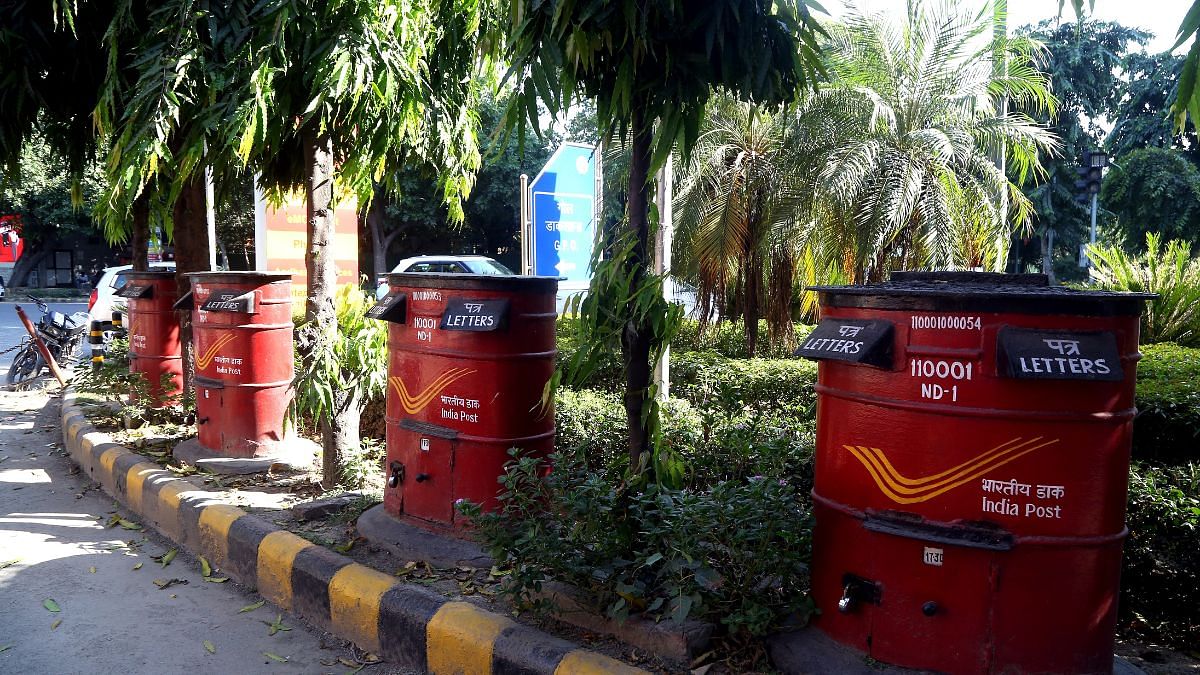
Also read: Govt schoolteachers are drowning. Classwork, homework, more work
Pressure at the lower level
Ankit Saini joined India Post in April 2011 as chhatai sahayak. It wasn’t his dream job but he accepted the role, thinking a government job would bring stability and security.
When Saini joined, his job entailed dividing the parcel physically. But newer responsibilities have been added to his work profile, especially since 2016 when aggressive targets were introduced.
Now he has to communicate with bulk mailers, submit data sheets, maintain data on Google Sheets and update on the department’s software.
“I had an engineering degree and I had good computer skills, so I was transferred to the back office. Now I work on different software that contain data about delivery, handles mails of customers and with all that I have to keep updating my seniors about my work too. I deal with the customers directly and they ring up all through the day,” said Saini.
On average, Saini works more than 10 hours a day and receives work-related calls on weekends from seniors and customers inquiring about consignments. He has to clear his email queries from contractual customers and bulk mailers too.
There have been times where our senior officer locked the door and
warned us that we can’t leave until the work gets completed. People were
thinking of calling the police
–Ankit Saini, chhatai sahayak, India Post
“There have been times where our senior officer locked the door and warned us that we can’t leave until the work gets completed. People were thinking of calling the police. Seniors humiliate staff and even threaten ‘If this work won’t get done, then I will transfer you somewhere far’”.
Also read: Not all of Haryana’s retired wrestlers join politics. Ticket checkers, police, property dealers
Postman 2.0
Fifty-five-year-old Manbir Singh has been working as a postman for the last 25 years in Delhi’s southwest district. Earlier, people used to send money orders and letters. With the rise of the internet and technology, all that has declined. But that hasn’t reduced Singh’s workload. Now he has to compete with young delivery workers enrolled with private delivery operators and who have better resources and technology.
Mahesh, 25, works at Ekart as a delivery executive and earns Rs 5 on every parcel delivery. His monthly income remains around Rs 15,000. The delivery partner slogs as long as Manbir Singh but sometimes the work day stretches to more than 12 hours. On an average, he delivers 80-100 parcels every day. But unlike Singh, Mahesh has a big bag in which he can carry more parcels, and a motorbike.
“It is true that postmen still get cycle allowance but they get around Rs 50,000 as salary if they are working for 15 years. People in similar roles at private companies just make deliveries. But India Post does so much more,” said Sinha.
The expanding goal of financial inclusion has meant more correspondence between banks and customers. That increased correspondence load is being shouldered by India Post.
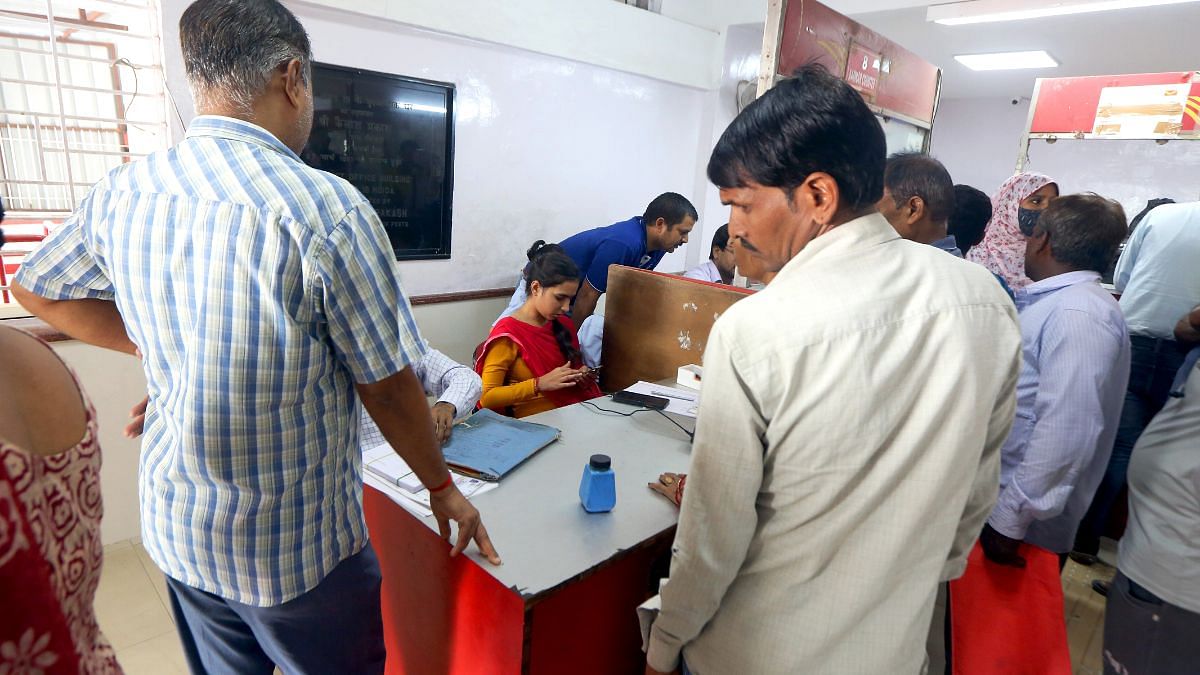
“Letters have been replaced by PAN cards, ATM cards, passports, and such. Earlier, only a few wealthy people had bank accounts, but now everyone has one, and I have to deliver their ATM cards. My work has increased fourfold in the last few years,” said Manbir Singh as he sorted packets.
Everyone in the neighborhood knows Singh. He started his job with a bicycle, then upgraded to a motorbike, which he bought with his own money.
“People in the field think I’ve been promoted because I travel on a motorbike, but it’s hard to explain that I got it for my own convenience. Even with the bike, it takes me 11 hours a day to meet my daily delivery target,” said Singh as he started his bike and prepared to head out.
After the ecommerce boom, India Post introduced digital tracking systems that tracked speed post and parcel deliveries. Now a postman is required to digitally capture the details by scanning the parcel and marking it to the list before updating the information into the system, so that customers can get the real-time details about the parcel.
“With the new digital facilities, we had to balance the traditional tasks with new digital operations. For example, I used to take the signature of the person who received the item. I do this now too but now I have to scan the parcel and mark its entry in the database using my smartphone,” said Manbir Singh.
For some, this shift has brought hectic working hours and for some, it’s become “part of the job”. Either way, it’s clear that the nature of the job has changed.
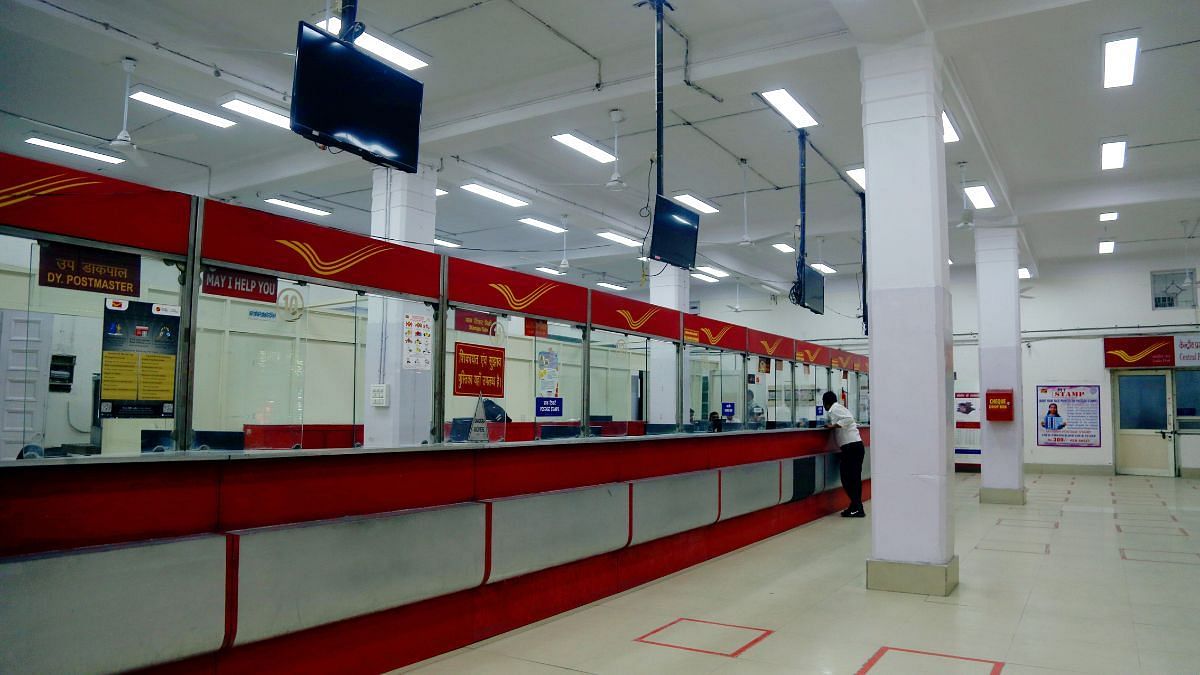
Rajesh Jhakad sees this transition differently and encourages staff to chase targets. He acknowledges that employees have struggled to adapt to new software and technology, and now they are grappling with increasing pressure, but he said it’s all “part of the job”.
“I personally faced difficulties learning new software, but if someone wants to work, they will. These targets push people to work. Those who are lazy will complain. What can anyone do if the government increases working hours from eight to 10?” asked Jhakad.
Not just a postal service
India Post is not just a postal service that delivers parcels and packages. It is India’s largest network, reaching many far-flung areas and extending government services such as the Gramin Dak Sewak Welfare Schemes and credit facilities like ‘Book Now Pay Later’.
From handling Aadhaar card desks to selling Gangajal and Indian flags on Independence Day, and even distributing prasad during the inauguration of the Ram Mandir, India Post manages an extensive range of tasks.
“There’s always something new added to our list of duties. Every post office has an Aadhaar desk. We’ve sold flags for Rs 25 around Independence Day, and we manage many government schemes, all while keeping targets and competition in mind,” said Saini.
In addition, the Department of Post handles deposits under small savings schemes and offers retail services like bill collection and form sales. It also acts as an agent of the Government of India, distributing old-age pensions and MGNREGS payments. Post offices also sell Postal Life Insurance (PLI) and Rural Postal Life Insurance (RPLI) schemes.
As of March 2023, India Post has opened 2.94 crore Sukanya Samridhi accounts.
“New scheme means more work. Initially, it seemed really tough and we were overwhelmed with the pressure of opening more accounts with our routine work. But it’s not something that we can leave. We have to do it,” said Jhakad.
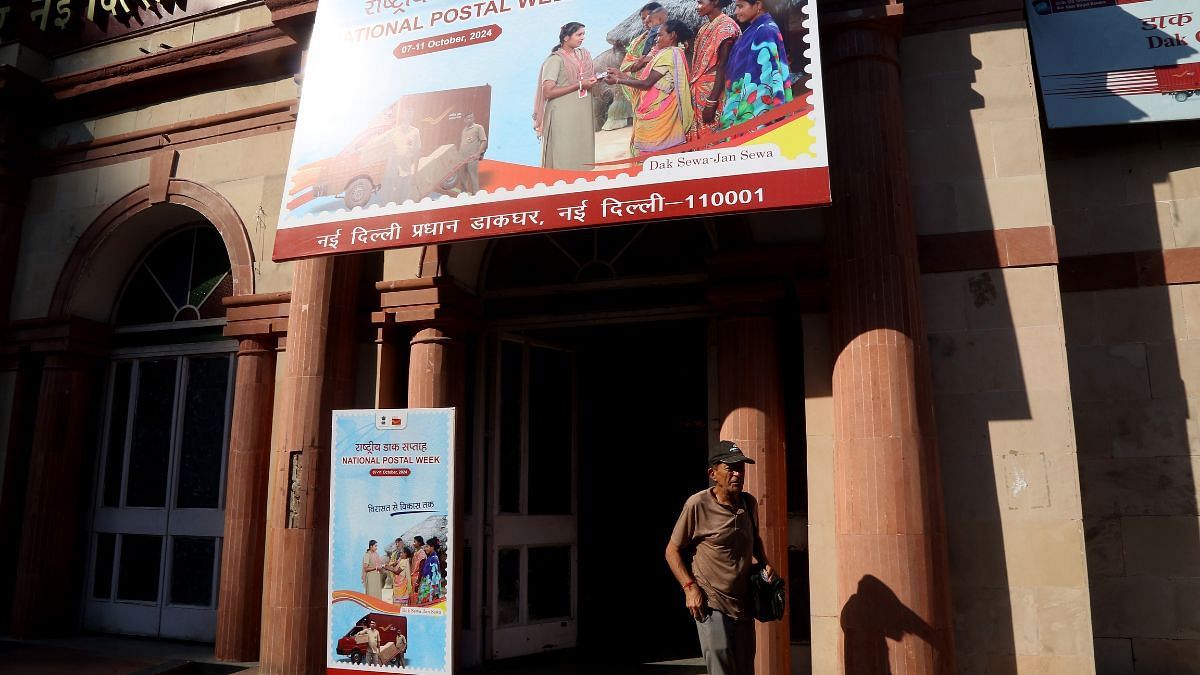
Balbir Kashyap, a postmaster at head office of India Post in Delhi said it was a nightmare dealing with high workload when the Sukanya scheme was introduced.
“Now we have to assist customers with digital banking. We got training for that as well. It increased our skill set but also increased the workload. We are doing this along with the postal duties,” said Jhakad, showing the IPPB app on his smartphone.
While Jhakad has made peace with the new culture at India Post, the likes of Saini want to start something of their own.
“I am preparing a social media team. I will start content creation, but there is a risk. The only good thing about this government job is that it pays my bills and there is job security. But we have to see how long it lasts as there is talk of privatisation. It’s always good to have a plan B,” said Saini.
The article is part of the ThePrint’s SarkariNaukri series that tracks the changing nature of government jobs.
(Edited by Anurag Chaubey)



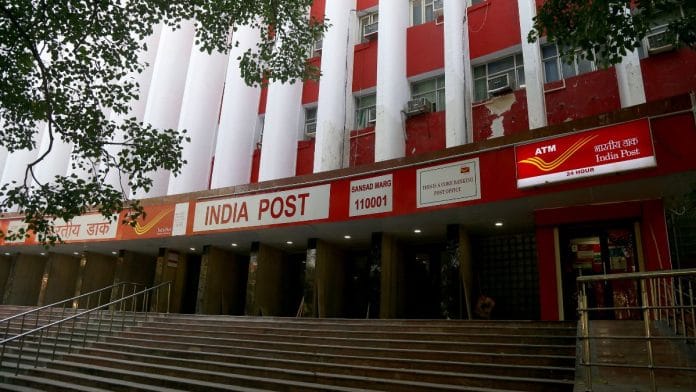



This has been the case with all bankers for the past 16-18 years. Surprised that no one is bothered yet! And think of the working hours?We have to sell everything from govt schemes to mutual funds. And we did not get any priority for COVID vaccination when all other essential services got priority.